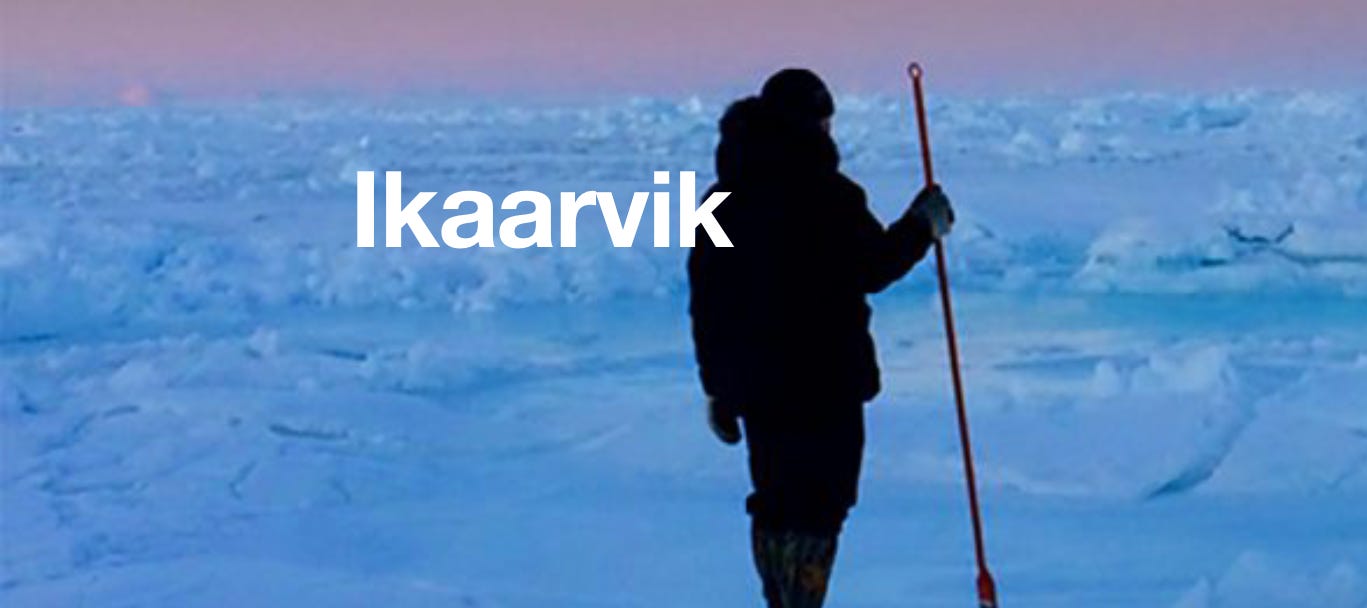
50 Words for Snow
Problems differ more than we say
Winter’s nearing its end, and many parts of the US are getting what might be their last snowstorms. You’ve probably heard that the Inuit have 50 different words for “snow.” As you might guess, though, the truth is more complicated than that.
First, it depends on which language you mean. According to the Alaskan Native Languages Archive, there are two main language groups in this part of the world. One is the Aleut language, otherwise known as Unangan. The other branch is Inuit-Yupik, which has about a dozen varieties still in use today.
Even if you just pick one of those languages, counting the words for snow still gets messy. It depends on what you mean by “word”. You see, these languages have many root words that mean snow, but then they add on extensions to get more specific about the kind of snow involved.
For example, the word qanik means “fallen snow”. But if we add to it, we can get the word qanittak, which means “freshly fallen snow”. This is a simple example, but we can go much further. We could use the word sitilluqaaq for example, which means “a recently formed hard drift of snow after a storm”. “50 words for snow” doesn’t even get us started.
The nature of the Inuit-Yupik-Unangan languages is that you can craft such a vast variety of “words” for snow that we’d never find an end to them. We need a different way of thinking about language itself to get started in the right direction.
This all relates to another quirk in the way we talk about the problems facing the world. We call food insecurity “a problem.” The same goes for human trafficking, illiteracy, and any number of other challenges. Each one is “a problem.” But this language doesn’t reflect reality.
For example, we call access to clean water a “problem,” as though everyone without clean water is in the same situation. But getting clean water to people in Malawi, Darfur, Dhaka, or Flint requires very different solutions. Most notably, the solutions that worked in one place, like Flint, wouldn’t work in any of these other places.
“Problem” lacks nuance and context, and so then does our understanding of things like clean water, human trafficking, illiteracy, an so on. What we could really use is a language like Inuit, where we have a word like “clean-water-for-people-with-dilapidated-municipal-water-systems-in-urban-US-settings”. Or, “clean-water-for-people-where-water-sources-are-targeted-in-armed-conflict.” Absent the language for it, we at least need the clearer thinking that language like this provides.
What problems are you lumping together? How are they different in a way that matters?
(Edit: The previous version of this article used the word “Eskimo” to collectively refer to these languages because the sources I relied on did the same. But a kind reader helped me learn that this term is unacceptable because of its colonial origin. The native people of the region prefer the terms from their own languages, such as “Inuit.”)
Seeing Good at Work
Inuit communities over hundreds of years developed complex expertise that’s enabled them to live in extreme environments. Climate change has made their home one of the fastest-changing parts of the planet, threatening the survival of the Inuit way of life. To make matters worse, Inuit children are one of the fastest growing demographics in Canada yet have the fewest educational resources.

Shelly Elverum is bridging the Inuit and Western worlds through collaborative scientific research projects in a model called ScIQ, where the local youth take key roles in research design and data collection. This gives them an opportunity to grow academically while promoting and preserving centuries of traditional knowledge. Ikaarvik, a leading ScIQ program, has received funding from a wide range of environmental research groups.
Promotional Stuff
The topic this week is a perfect chance to introduce you to The Ballard Brief, a publication that specializes in just the kind of nuance that’s needed to better understand social problems. Published by BYU’s Ballard Center for Social Impact, The Ballard Brief offers short, but thorough briefings on a wide variety of social issues.
In each briefing, you’ll find explanations about problems around the world and current and emerging practices that we’re using today to try and solve these problems. Each briefing is rigorously researched and offers additional resources where you can learn more. Its library of topics is growing quickly.



